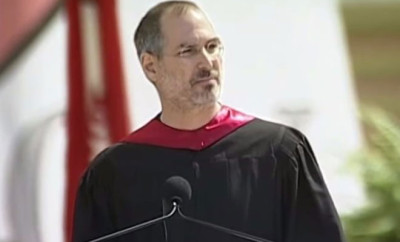
Mental Toughness
Visualisation
Advanced Visualisation techniques
Visualisation is nothing new; many successful people in sport and business have been doing it ‘naturally’ for a long time. And therein lies the problem. It takes great skill for a person with a ‘natural’ skill to explain to others how to do it. This is because it is so easy for the natural, that they start to explain at Step 6 or Step 7, where the learner needs everything to be explained from Step 1. This is one of the reasons why naturally gifted athletes can struggle as coaches – they just don’t ‘get’ that their athletes can’t do what they do naturally – and they don’t have the skills to explain from step 1.
Fortunately the skills to explain from Step 1 can be learned, and this article will be aimed at explaining Advanced Visualisation from Step 1.
Before we look at what visualisation can be used for, it is useful to understand the effects.
Visualisation can:
- Create a sense of comfort, so that tense or important occasions are easier to manage
- Train the neuro-muscular pathways in the body to fire more accurately under certain conditions
- Develop confidence for the athlete in their ability to compete at that level or perform a skill
- Shift someone’s mood to their optimum performance levels (As part of game preparation or in a game itself)
So ultimately visualisation can be used to shift mood (to calmness or confidence or whatever is required) and to help an athlete become more accurate.
How visualisations affect mood was covered in the first visualisation article, both in the main body and the great contributions below it – what I would like to focus on here is accuracy.
To understand accuracy in terms of visualisations – we need to look at that elusive class of rugby player – the “Instinct Player.” Instinct players will tell you that they don’t like to prepare what they are going to do in a game specifically, as they will “Play what’s in front of them.” What they know, and why they have (limited) success with this process is that they intuitively understand Timothy Gallwey’s fundamental performance theory.
Gallwey said that your performance is equal to your body’s natural ability and knowledge minus the interference of the conscious mind. Or Performance = Honed ability – Mind Noise. The “mind noise” is often in the form of self talk, thinking about performing the skill iteslf, thinking about others, thinking about consequences of choices or the mental debris of not immediately committing 100% to a decision. It can come in many forms, and almost all of them drag the athlete out of their zone, out of their MOMENT to play. Instinct players know that when you are focusing on the coaches instructions, the gameplan, your own prepared moves and you are not 100% integrated so that you can do them without thought, your accuracy and timing may be off. So they try not to think during a game – they try to do!
In essence that is the success formula for most sport. On the field, don’t think –Do! However what you choose to Do is based on the quality of your thinking off the pitch, and this is where Instinct Players fall short.
Firstly as Abraham Maslow pointed out, human beings don’t have instincts – such as animals do. We are not born with strong automatic responses to situations which is a common way that people describe instincts in animals. We have “instinctoids”, relatively weak urges that can be drowned out by strong emotion and our own mental conditioning, or enhanced by our ability to create meaning, to learn and to grow.
Instinct players learnt their instinctive moves on the rugby pitch – and then somewhere during their development they decided that they didn’t want to think too deeply about what they are going to do any more. This leaves them with relatively few instinctive choices that they can call upon in the heat of the moment. This can work fantastically well in the first season or so, but after a while they get “found out”, and because they aren’t learning anything extra to make them more dynamic, this affects their confidence, their form and ultimately their performance.
The other challenge with this instinctive approach is often the skill being used in the heat of the moment wasn’t practised effectively in training as it couldn’t be realistically replicated. (e.g Running flat out after 70 minutes of rugby, and grubbering the ball ahead off balance against the touch line) and so the accuracy is relatively low, since the skill wasn’t physically trained or mentally honed. A great example of this is how often you see Wings’ chip kicks ahead go directly out, or get a poor result.
What high quality, accurate and purposeful visualisation can do is create and develop instinctive rugby players with much higher levels of accuracy than they had before.
I recommend to the players that I work with, that they treat visualisation like a gym programme. Identify the core skills of their game. (Or muscles they want to work out in the gym) Develop several variations that may occur in a game, and create a programme that they can follow through regularly.
Once the core skills have been mentally honed, then moving onto advanced skills is the next step.
E.g. Flank Forwards Mental Gym Programme
Core skills:
Tackle
Steal ball
Offload in tackle
Run angles off ball carrier
Lineout jump
Lineout support
etc.
Advanced skills:
Sidestep off foot
10m Chip of the ball and gather (1 bounce)
5m grubber chip of the ball and gather (6 bounces)
etc.
Programme:
Tackle: 8 Reps of 3 different angles (8 Reps of front on tackle, 8 reps of left shoulder tackle, 8 reps of right shoulder tackle)
Sidestep off foot: 8 reps of 5 different variations (Left foot with 2 players in front, right foot with 2 players in front, running against the grain to create space, at full speed, at a standing start etc)
Once the programme has been running for sometime, then you can add in the extra stretches the player is looking to improve on, with a focus on decision making scenarios, rather than skills development. This may involve mental rehearsing set moves at first, and then after that purposefully developing instinctual behaviour for certain scenarios.
E.g.
2 players on one attacking
1 on 1 attacking
1 on 1 defending
These scenarios should include any relevant learning’s from the weekends game, as well as learning’s from what the opposition did well or badly or even any game on TV that had something useful to learn. In this way you fast track the experience of the rugby player, develop more accuracy as you are visualising perfect technique to train muscle memory, and unleash confident instinctive players.
Repeated and consistent high quality visualisation create such strong neuro-muscluar connections in relation to the specific action focused on, that decisions about that specific action can become instinctive.
Just like in gym, you don’t expect to walk out of the gym in one session with a “beach body”, you have to put the hard yards in to get the results – the same holds true in mental gym, but if you do put the work in, combine that with good technique, you will be streaks ahead of your competition.
Visualisation – the How’s and Whys
Visualisation is probably one of the most popular topics for any mental coach to share with rugby players.
Why?
Two reasons, it is something direct and tangible that you can share, and secondly, for most of the time it works.
For those rugby players that visualise, most that I have come across will use visualisation as part of their mental preparation for a game. They will go over some things in their head, certain moves and tactics, largely as a way to mentally shift gears to a state of mental readiness as well as to manage any creeping nerves or anxiety. It is part of their routine before game day. As a process to manage anxiety and mentally warm up, if done correctly, this can play a very important role in producing a quality performance.
Factors that lessen the effectiveness of visualisation:
If a player is a perfectionist, in that he expects to do exactly what he visualised in a game, that mental upset of the game playing out differently can throw him out of his zone. Preparation visualisation is like creating a groove in your mind that you are always trying to return to, and the real life experience may have similarities, but usually plays out like a meandering stream with the groove at its centre. Some events being better or worse than imagined, however with a solid foundation and the ability to mentally centre yourself you can get back on track. Tiger Woods is a great example of this; he wants to play every shot in the same mood that he plays best in, if a shot goes well or badly he has a few seconds to express his joy or frustration – and then let it go to get back to his optimum performance state.
If a visualisation is a long complicated movie it doesn’t work. You can only control you; you can’t control your team-mates, the opposition or the bounce of the ball. If you need to do a lot of visualisation, do it in small movie chunks that can be used in multiple circumstances.
If a player is trying to visualise something that is in contradiction to his deep seated beliefs, there is very little value to be gained. Without a comprehensive and purposefully developed set of performance beliefs, visualisation can be a waste of time. Examples of such beliefs are: Whatever position I play in, I can be great. Who I play against does not limit me. I can play no matter what the score is. When everyone is tired, I have more opportunity to do what I practised. Etc. The words will always be unique to the player, but general trends are very similar in what players require.
Poor visualisation technique
Some people battle to create movies in their mind about what they want to do, their ability to imagine using the visual modality is underdeveloped. Normally they would have another preferred sense that would be much more developed, perhaps their kinaesthetic (feeling) sense. So whilst a rugby player of this type would battle to visualise a tackle, ask them what it feels like to hit a player square in the chest in a tackle, and they can tell you. Every one of us has a preferred set of senses that is our own unique recipe for effective visualisation. Normally it’s a combination of the three dominant senses: visual, kinaesthetic and auditory – however sometimes the sense of smell (olfactory) or even taste (gustatory) can be part of the recipe.This type of multi-sensory based visualisation is sometimes called sensorisation, but I normally just refer to it as visualisation to avoid confusion.
Advanced visualisation technique includes identifying which senses are involved for a particular action, and in which order they appear for the most effective result. E.g for Player A, their high-performance recipe for front on tackles is: See player running at me, feel legs contract in semi-crouch, hear his breathing, taste my gumguard, launch shoulder at chest target, feel shoulder hit, feel legs drive. Etc. Some players have different recipes for each skill, but most have general trends that work for them. I once worked with an incredibly dynamic power lifter, who activated multiple senses (in order) at every stage of his lift when visualising it.
At a beginner visualisation level I encourage everyone just to add in as many senses as possible, to see how ‘real’ they can make it. If they are struggling with one part for example what it looks like, I ask them a sound or feeling question, and if they struggle for feeling, I ask them what it looks like. Sometimes the order will unlock the ability to use the other senses. I also check to see if they are visualising in first person (as if seeing things from their own eyes) or from 3rd person, like they would see themselves on TV. 3rd person if very useful to ensure good whole body technique, but it should always be used with the more powerful 1st person, as then you can develop your sense of feeling and timing.







